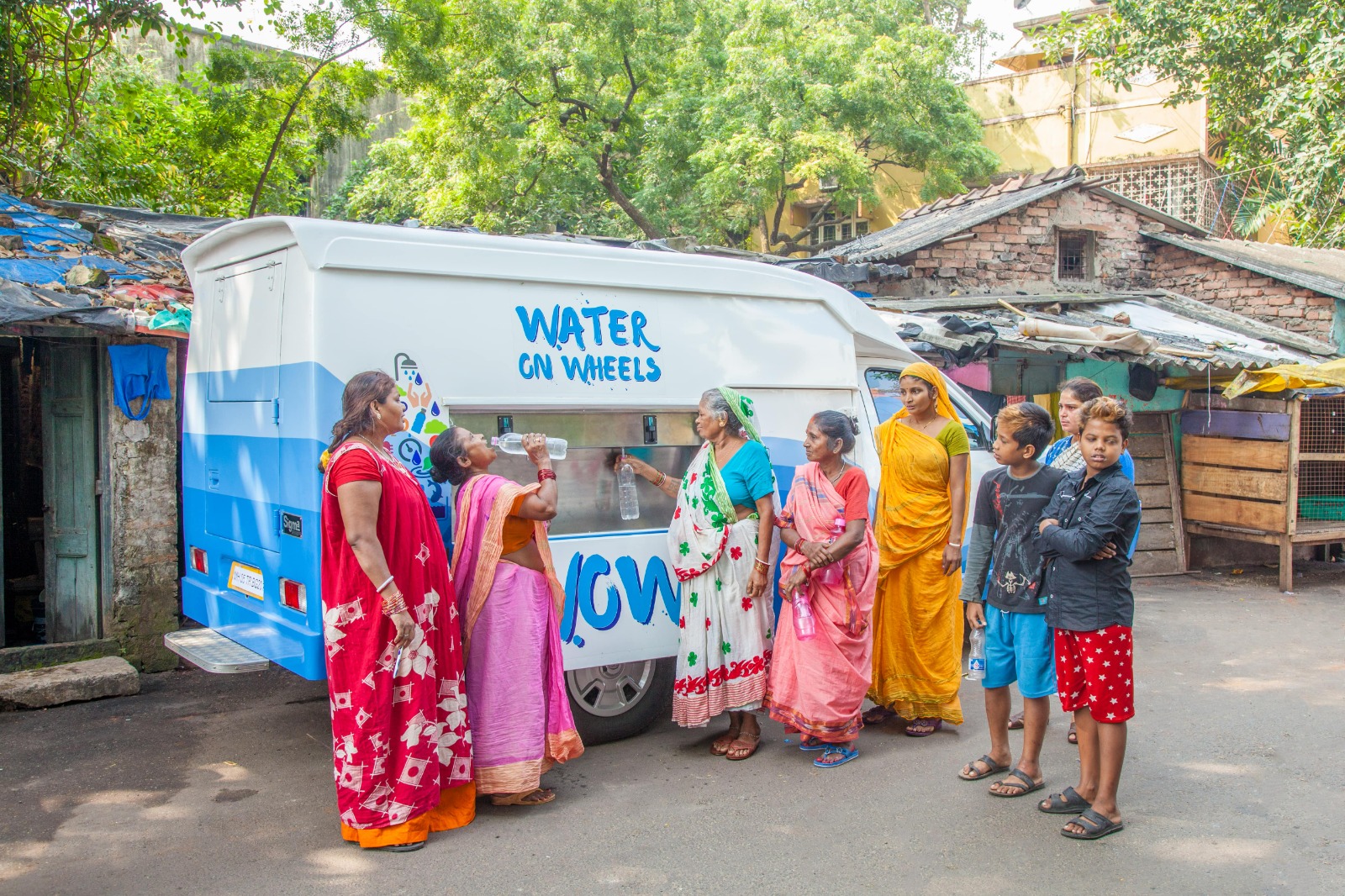The lethal threat lurking in India’s groundwater: arsenic and fluoride’s silent invasion.
The perennial India was described by the famous Indian writer Bankim Chandra Chattopadhay as the Sujalang (‘having good water to drink’) and Sufalang (‘having good harvest’) due to its geographical location. However, the perils of arsenic (As), fluoride (Fl) and several other chemical contaminants have rooted all over India, especially in the north-east, and rendered the statement false.
Arsenic and fluoride contamination in India is geogenic, meaning that the source is natural. These chemicals were embedded in the mountains of the Himalayas. The Ganges River carried them in the form of minerals and deposited them on the entire Indo-Gangetic plain. Over time, the chemicals seeped deep into the ground and remained earthed. Upon withdrawal of groundwater, the entrapped As and Fl leached out to the surface level and entered into the human ecosystem.
Groundwater arsenic was reported for the first time from West Bengal in the year 1978, when two blocks were reported to be contaminated. This number has increased to 148 blocks from 14 districts and 111 blocks from 12 districts of West Bengal on both sides of the Ganges River by 2024. Initially, the groundwater arsenic contamination was limited to West Bengal, but later on, it spread to other parts of India. The condition is worst in the district of Murshidabad, where 25 out of 26 blocks are contaminated with arsenic.
Arsenic is listed as a group 1 carcinogen by the International Agency for Research on Cancer. Source: World Health Organization (WHO).
The groundwater along the entire track of the Ganga-Meghna-Brahmaputra plain is contaminated with arsenic, starting from the Allahabad-Kanpur track, and continuing through Uttar Pradesh, Uttarakhand, Jharkhand, Bihar, West Bengal, Bangladesh, and all seven of the north-east hilly states.
Arsenic is listed as a group 1 carcinogen by the International Agency for Research on Cancer. The maximum amount of arsenic in drinking water recommended by the World Health Organization (WHO) is 10 parts per billion (ppb) or 10 μg/l. In the above-mentioned areas, the level varies from 10 to as high as 3700 ppb. The levels beyond that are lethal. Exposure to low to moderate levels of arsenic (10-300 μg/l) through drinking water has adverse effects, such as skin lesions, circulatory disorders, neurological complications, diabetes, respiratory complications, hepatic and renal dysfunction, and can even lead to mortality.
The good news is that without any treatment, 50% of arsenic can be removed if we let the element settle for 12 hours. When groundwater is pumped out, the iron present in it reacts with the oxygen present in the air and attracts a good amount of As present in water and settles down. The well-rested water can be filtered out and is fit for drinking as 50-60% of As is removed by this easy method.
About 70% of arsenic in the body is excreted through urine, but the 30% that remains in the body is toxic, though the toxicity can be combatted by a healthy nutritious diet.

Impending health hazards in food
But what if the healthy diet is also contaminated with arsenic? Researchers from the School of Environmental Studies at Jadavpur University in West Bengal have confirmed arsenic has entered the food chain as well. Since the arsenic-laden groundwater is used for irrigation, the inorganic element can enter the body of plants, starting from the roots and continuing through the stems and the leaves before finally getting accumulated in the grains and vegetables.
The pre-monsoon paddy absorbs 10 times more arsenic than other crops growing in India, like wheat and barley, because the roots are allowed to stand in the flooded fields for a considerable amount of time, as part of the normal process of paddy cultivation. So, to the Bengal folks out there – think twice before you gorge on your beloved bhaat!
Suppose we eat healthy food now and it fights arsenic toxicity, but due to its mobility in the food chain, no one can guarantee how long our body will continue fighting.
Dr. Tarit Roychowdhury
Unprecedented health concerns arise when domestic animals are fed the leftovers of the arsenic-contaminated plants. The paddy shoots that are used as fodder for livestock often contain a high percentage of arsenic, rendering the food unfit for animals. The cow dung used as a manure has arsenic. The cow milk drunk by the children and made into sweets in Bengal contains traces of arsenic as well.
“Suppose we eat healthy food now and it fights arsenic toxicity, but due to its mobility in the food chain, no one can guarantee how long our body will continue fighting,” says environmentalist and scientist Dr. Tarit Roychowdhury, a senior faculty member of the School of Environmental Studies, Jadavpur University.
Separated by the Ganges River, India’s neighboring country, Bangladesh, is now the top spot on the list of countries most contaminated by groundwater arsenic.
All SAARC countries (like China, Taiwan, Bangladesh, Pakistan, Sri Lanka, Vietnam and so on) are among the most affected, but the huge population, poor socio-economic conditions, and the low literacy rate result in India facing the greatest difficulty in mitigating the contamination, especially when arsenic enters in the food chain. Out of the 64 districts of Bangladesh, 50 districts are contaminated with arsenic.
The duality of Fluoride in drinking water
While researching for Arsenic contamination in drinking water, another chemical that caught the researcher’s attention is fluoride. Worryingly, fluoride contamination of groundwater is an even bigger problem in India than contamination with arsenic. In India, at least 22 states are fluoride-contaminated. It was reported for the first time in Andhra Pradesh in the year 1937.
In India, at least 22 states are fluoride contaminated.
Fluoride is not as poisonous as arsenic, but it shows its toxicity differently. Fluoride has inherently a dual nature. If it does not exceed the recommended amount in drinking water of 1.5 parts per million (ppm), it is beneficial to health. It strengthens the body parts made of calcium, such as our teeth or bones. Once the percentage of fluoride exceeds that level, the same fluoride can commonly lead to dental fluorosis or skeletal fluorosis. If we look at the geographical distribution, arsenic contamination is found in 230 districts across 25 states, while fluoride contamination is found in 469 districts across 27 states of India.
While the government has promised quite some developments in the form of arsenic removal water treatment plants, the plants are not monitored regularly, leading to ineffective filtration. Furthermore, deep tube wells that reach deeper and therefore clean groundwater are installed at every house in the affected districts of West Bengal. However, with excessive usage, instead of remediating arsenic contamination, they actually deplete the ground water level and expose the chemicals at a menacing rate.

WOW – Water on Wheels: The mobile water solution
It is said that ‘every cloud has a silver lining’. A promising relief to arsenic is WOW, ‘Water on Wheels,’ an initiative taken by Harbauer India. The WOW car reaches the affected area and filters the water using a water treatment plant built into the car. This project was successfully implemented in parts of Bihar during a period of unprecedented flooding.
Arsenic contamination is found in 230 districts across 25 states, while fluoride contamination is found in 469 districts across 27 states of India.
Apart from creating WOW, the company, in association with the Ministry of Public Health for Drinking Water, has installed 16 Arsenic Removal Plants (ARPs) in Bengal that provide safe drinking water to every house. Naturally, a question comes to mind: How is this water treatment plant better than the already existing ones?
It is fully automated, where one person does the job of 4-5 people. There are separate analyzers installed in the ARP unit that check the levels of contaminants like chlorine, iron, and arsenic. This allows them to obtain some knowledge on the degree of water contamination. You can monitor the levels of arsenic from anywhere in the world.
The naturally sourced contaminated water is fed into the ARPs, the water then goes through the process of filtration and the clean water comes out. The toxic residue/waste is safely handled by a separate technical team that deals with preventing the penetration of the contaminated residue of the ARPs into groundwater. The backwash water (water used to clean the machinery) is also recirculated instead of going to waste, leading to zero liquid discharge. Due to various contributing factors for a cleaner potable water and greener environment, these ARPs are smarter and eco-friendlier than existing ARPs.
From a governmental perspective, the Ministry of Jal Shakti has been allotted a proposed budget of 9.644.620.128,35 Euros this year (2024), which is 12% more than last financial year’s budget. Still, it is a long way until we reach the target of providing arsenic-safe water to each and every house in India. The progress is there, but it’s slow. Harbauer (a wholly owned German subsidiary of Harbauer GmbH), based in India in collaboration with the Ministry of Drinking Water and Sanitation, could penetrate only 8-10% of the population of the Nadia and Murshidabad districts of West Bengal.
In the last 30 years the inhabitants of arsenic-inflicted areas have learned the word ‘arsenic’ and understood that it is a toxic element.
In the last 30 years, through various awareness programs, and continuous evaluation of water quality monitoring, the inhabitants of arsenic-inflicted areas have learned the word ‘arsenic’ and understood that it is a toxic element, according to the researchers of the School of Environmental Studies in West Bengal after their field visits to villages. In order to combat the chemical contamination, a collaboration of the local communities, researchers, and government or private organizations is necessary, says Dr. Roychowdhury. Only by emphasizing this alliance can we emerge victorious from the clutches of chemical poisoning.
